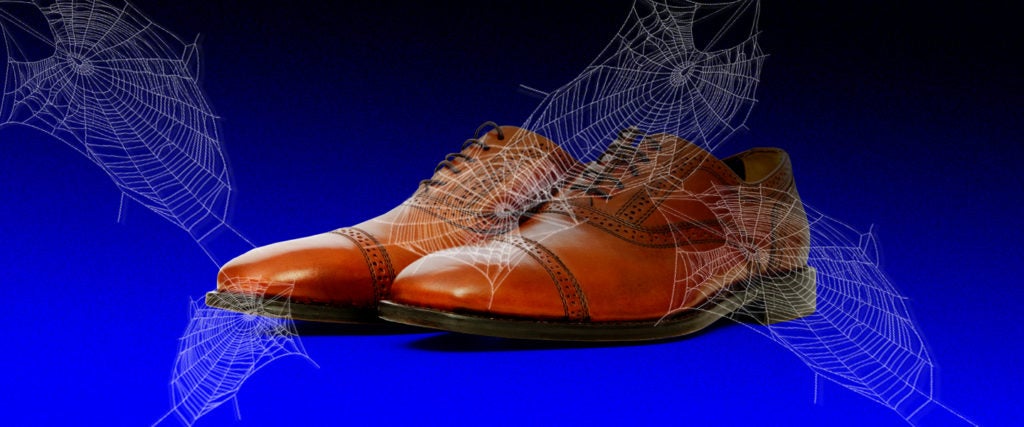About a year ago pre-pandemic, I was hooking up with an investment banker who let me know he’d gone to the Wharton School of the University of Pennsylvania — you know, Donald Trump’s alma mater. He then quickly informed me he voted for Hillary Clinton in 2016.
The banker’s apartment was furnished with art from his travels throughout Europe and Asia, and he made enough money for frequent trips home to family in San Francisco and vacations in Italy. He had the means for a one-bedroom apartment on Houston Street in Downtown Manhattan.
Wharton guy had more suits in his closet than ghosts. A doorman was there to buzz me at 1 a.m. whenever I stumbled in. But none of these wealth signifiers compared to the countless dress shoes stored in his closet — and a surplus on the shoe rack by his front door. He had wingtip and cap-toe oxfords, derbies, chukka boots and endless loafers. All were fitted with wooden shoe trees.
For his refined lifestyle, I still couldn’t understand why he kept these designer shoes by the door. Wouldn’t they be exposed to kitchen splashes and scuffs from my Converse high-tops, the black sheep of the shoe rack?
Recently, I’ve been thinking about this man — and his footwear — again. In a pandemic, when time outside is limited and dress clothes are all but extinct, I don’t know what to do with humble outlet mall dress shoes. They sit tucked on the top shelf of my closet. There has to be a more suitable approach than letting them collect dust in the hallway or my closet.
It seems like my Wharton guy got one thing right: cedar shoe trees. They’re like hangers for your shoes, holding the structure in place. It’s important to go with wooden shoe trees over the cheaper plastic alternatives. “Cedar smells good and helps soak up any leftover moisture your feet have left behind,” Dappered says. As for what version to buy, pick split-toe shoe trees over full-toe. The former is made of two pieces of wood, making it adjustable for wide-fit or narrow-fit shoes.
As for how to store dress shoes, Bespoke Unit suggests the best thing to do is keep them in the separate fleece bags in which they were purchased. Okay, well, I no longer have either — but they’re usually inexpensive on Amazon and seemingly imperative, especially for suede shoes. “They protect your shoes from each other. Heels and soles can easily scratch the uppers of a shoe, and that’s not something you want to happen to you,” Bespoke writes. While bags are crucial, boxes are a luxury if you have space for that much storage. I don’t, so it seems like the best I can do is continue letting my loafers (now in bags) live on the top shelf of my closet where it’s cool, dry and undisturbed.
These are preventative measures. If your dress shoes are already worn (look at the soles), it might be time to get them repaired. It’s usually best to go to a local shoe repair shop in town, but there’s also Shoe Drop, which is a door-to-door shippable shoe repair with select Nordstrom dropoff locations in Illinois, Michigan and Washington.
But make sure you’re not paying for a repair more expensive than a new pair of loafers. “Cobblers usually fix soles by adding half or full new soles; you’ll want to specify whether you want leather, rubber or foam soles ahead of time (leather tends to be slightly more),” Vox says.
The good news is that you’ve got time to do your research. With holiday family gatherings (mostly) canceled this year and weddings postponed, your dress shoes are looking at potentially another year in the closet. If your workplace’s office wear is largely a thing of the past, donate your gently used dress shoes to a thrift store like Out of the Closet to help someone else snag a job. When the office does open up, we’re probably wearing sweatpants and Uggs anyway.

